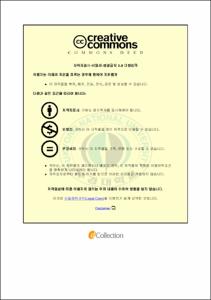코퍼스에 기반한 초등영어 교과서의 have동사 활용에 관한 분석
- Alternative Title
- A Corpus-based Analysis on the Usage of Have in English Textbooks for Elementary School
- Abstract
- The purpose of this study is to verify whether elementary school English text books are authentic data that young native-speakers under 14 years of age use practically in their daily lives by analyzing and comparing the usages of the high frequency verb have used in a native corpus and in English textbooks. The method of study is as follows.
To begin with, the 200 sentences with the verb have are randomly extracted from BNC(the British National Corpus) which is limited to spoken language that children under 14 use in everyday life using KWIC(Key-Word-In-Context) in concordance program. After that they are analyzed for functions, combination types, meanings, examples of usage and the frequency numbers of the verb have.
Likewise, in elementary school English textbooks from 3rd to 6th grade, all sentences with the verb have are taken out and examined in the same way as analysis of BNC. This study compares these two analysis results and verifies the value of English textbooks as authentic data.
The following are the results of this study.
Frist, in BNC, the verb have is used as main verb, auxiliary verb, semi-auxiliary and modal idioms in verb phrases. The verb have as main verb has 3 combination types such as have+noun(object), have got+noun(object), and have+noun+adjective/adverb. Especially, the have as auxiliary verb shows various usages in the sentences. The combination types of the verb have as auxiliary in verb phrases are found to be have+p.p, have been+p.p, have been+-ing, modal auxiliary+have+p.p, have+ø’, have+noun(subject)? and So/Neither+have+noun(subject). Also there are have+infinitive as semi-auxiliary and have got+infinitive as modal idioms.
Second, in elementary school English textbooks, only two types are analyzed : one is the verb have as main verbs - have+noun(object) - and the other is the verb have as semi-auxiliary - have+infinitive. The usages of the verb have in English text books tend to be almost concentrated in main verb excessively.
The comparison of two analysis results indicates significant differences about functions, combinations types and meanings of the verb have between BNC and English textbooks. Therefore, it can be concluded from the findings of study that elementary school English textbooks don’t reflect authentic data.
Elementary school English textbooks in use leave much to be desired. It is required to make English textbooks more authentic materials using a native corpus to improve students’ communication skills.
- Issued Date
- 2015
- Awarded Date
- 2015. 2
- Type
- Dissertation
- Publisher
- 교육대학원
- Alternative Author(s)
- Ahn, Sun Hee
- Affiliation
- 교육대학원
- Department
- 교육대학원 초등영어교육전공
- Advisor
- 김은일
- Table Of Contents
- Ⅰ. 서론 1
1.1 연구의 필요성 1
1.2. 연구의 목적 2
1.3. 연구의 구성 3
Ⅱ. 이론적 배경 및 선행연구 4
2.1. 외국어 교육 자료의 진정성 4
2.2. 코퍼스 분석 5
2.3. have 동사의 이론적 배경 6
2.3.1. 본동사로서의 have 6
2.3.2. 조동사로서의 have 11
Ⅲ. 연구 내용과 방법 18
3.1. 연구과제 18
3.2. 연구대상 18
3.3. 연구절차 19
Ⅳ. 연구결과 20
4.1. BNC에 사용된 have 동사분석 20
4.1.1. 본동사로서의 have 동사분석 21
4.1.2. 조동사로서의 have 동사분석 26
4.1.3. 준조동사로서의 have to 33
4.1.4. 서법관용구로서의 have got to 33
4.2. 초등영어 교과서에 사용된 have 동사 분석 34
4.3. BNC와 초등영어 교과서에 사용된 have 동사 비교 37
Ⅴ. 결론 및 제언 39
5.1. 결론 39
5.2. 제언 40
참고문헌 42
- Degree
- Master
- Files in This Item:
-
-
Download
 코퍼스에 기반한 초등영어 교과서의 have동사 활용에 관한 분석.pdf
기타 데이터 / 800.85 kB / Adobe PDF
코퍼스에 기반한 초등영어 교과서의 have동사 활용에 관한 분석.pdf
기타 데이터 / 800.85 kB / Adobe PDF
-
Items in Repository are protected by copyright, with all rights reserved, unless otherwise indicated.